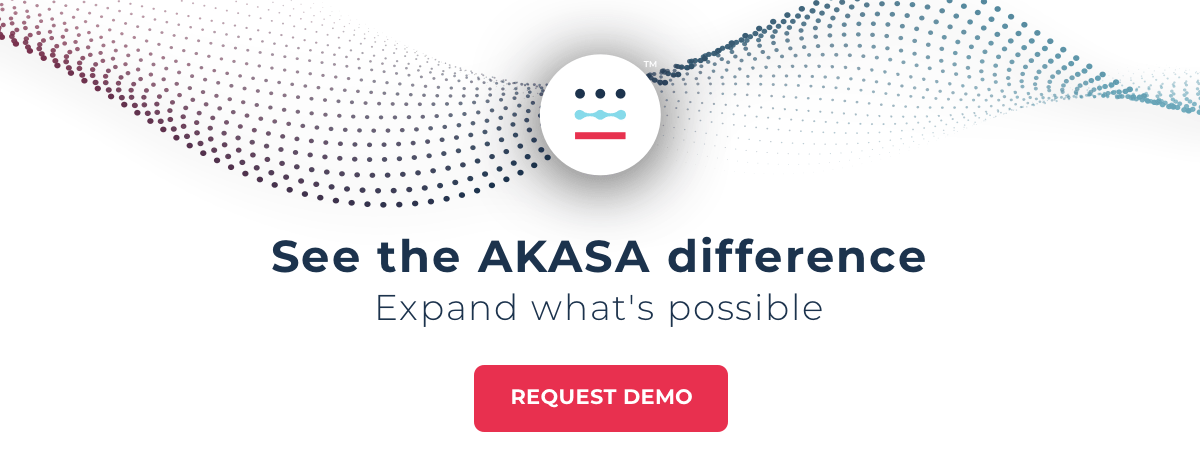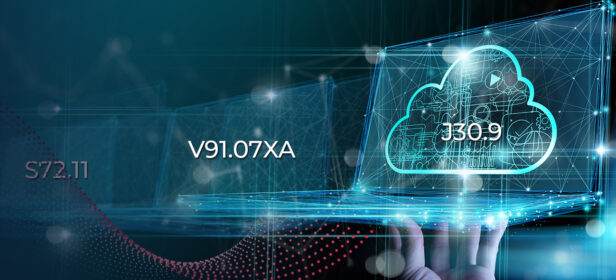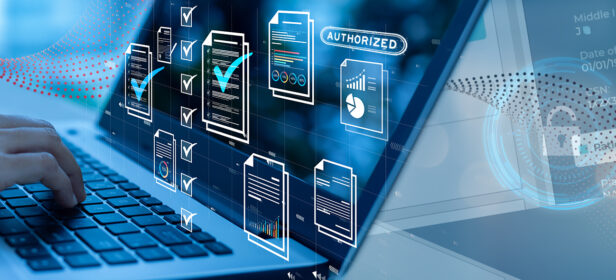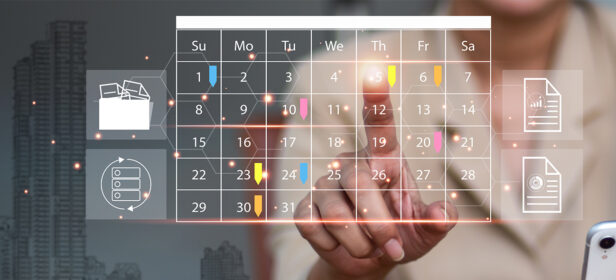The Gist
Scott Becker is well known as the founder of Becker’s Hospital Review, a publication that has established itself as a reliable source of trustworthy data and resources for hospital administrators. He recently hosted AKASA's CEO and co-founder, Malinka Walaliyadde, for an episode of Becker’s Healthcare Podcast.
The two discussed AI in healthcare, along with AKASA’s mission of pioneering Unified Automation® for healthcare revenue cycle management.
Listen to the podcast or read this lightly edited transcript of their conversation:
Scott Becker:
This is Scott Becker with the Becker’s Healthcare Podcast. I’m thrilled today to be joined by somebody who’s got one of the most creative and interesting technologies in the game today.
It’s helping to introduce and apply artificial intelligence to the revenue cycle world. We’re joined today by the CEO and co-founder of AKASA, Malinka Walaliyadde.
Malinka, a brilliant, brilliant driver of this technology, is going to talk about what he’s doing, how this works with health systems, what organizations could expect as they use more artificial intelligence and natural learning, and how this can impact labor and staffing, the revenue cycle and more.
Malinka, before I talk forever, can you take a moment to introduce yourself and tell us a little bit about AKASA?
Malinka Walaliyadde:
Absolutely. Pleasure to be here, Scott. Thank you for having me on. So, I am the CEO at AKASA. A little bit about me prior to AKASA, I was a partner at a venture capital firm, Andreessen Horowitz (a16z). They are a $16.5 billion venture capital investment firm that is based out of Silicon Valley in California. I helped start the health investing team several years ago that’s now grown into one of the largest investment teams there. I worked in about $250 million worth of investments across about 20 companies. These were new-age care providers, biotech companies, healthcare technology companies.
Through my experiences, both there as well as some of my experiences prior to a16z, I recognized the fundamental challenges that exist in the financial infrastructure of healthcare. And also recognized that there were ways that we could apply modern machine learning approaches to make those challenges fundamentally easier and solve for some of the problems that exist in the financial infrastructure culture.
So that is a very quick overview of my background and a little bit about the company.
Becker:
Talk a little bit about how there’s so much discussion of artificial intelligence and applying it to operational efficiencies, applying it to business, and so forth. Most of us don’t really understand what that means. I mean, we understand on a very sort of minimal level. Talk to us about what it means to sort of implement AI into health systems. How do you build an AI team in a health system? Talk about what this means and what it takes to build an AI team.
Walaliyadde:
Sure. I think for a lot of larger organizations, including health systems, there’s always this question of build versus buy. Do we try and recruit an AI team and build some of this internally or do we work with a partner that is an expert in that area? And my perspective here is from my time at AKASA, but also from my time at a16z. Because at a16z, we would work pretty closely with a lot of larger organizations, including health systems, as they were thinking about these efforts internally.
My take is:
“If you’re going to build an AI team internally, go into it with eyes wide open of what that really entails. And what I think often surprises people is AI and machine learning engineers, really top-tier talent in those areas, are actually shockingly expensive. Just being prepared to manage that is going to be important.”
Just to throw out some real numbers in the market today: a senior machine learning engineer can be as much as half a million dollars a year. I’m absolutely not exaggerating; these are real market statistics for these types of folks. And this is not at EVP position, SVP position, or VP position. They’re not managing teams. These are senior IC positions. But this is truly what is in the market today.
Becker:
So, due to shortage in those areas, are there a lot of hospitals building a true AI team from scratch? Are more outsourcing it and trying to find solutions that incorporate AI? And then how are health systems working with it?
Everybody says that their solution includes AI today. It’s almost become a buzzword. How does a health system differentiate from that and make sure they’re adopting the right kind of technology? How do they differentiate people that are trying to sell them AI-driven solutions versus those that really aren’t, so they can make the most of this technology option?
Walaliyadde:
Sure, so I would say that one of the key ways to do that is to really dig into two pieces:
One is research existing work that they’ve done with other customers; really understand through references how well is this product actually working — not just initially, but over the long term. Oftentimes, I think people over-orient on the first month or two of an implementation versus actually thinking over the long term about how easy this is to truly maintain and support that automation or that AI, and actually continue to deliver great results.
And what I think people have found, especially in the area of automation, is that following that initial implementation it can actually be quite expensive to maintain automation over time. Thinking about what the long-term total cost of ownership is critical.
And then the second thing is if you really want to dig into how fundamentally advanced or different the technology is, it’s also helpful to
“See if the team has published any sort of academic peer-reviewed papers that demonstrate and really, really rigorously validate that technology.”
Those are both areas I would recommend folks dig into.
Becker:
And take a moment on AKASA itself. Because you’ve got this brilliant team of engineers in a great commercial effort and they’re working with some great health systems. How does AKASA work with health systems?
Walaliyadde:
We have built the most sophisticated human-in-the-loop or expert-in-the-loop automation platform, leveraging AI to automate really complex revenue cycle operations.
We have a set of steps that we call “observe, learn, perform.” And, in fact, some of the technology was inspired by the approaches that were taken in the self-driving car world. In the self-driving car world, what they don’t do when they train a car to drive by itself is have an army of people try and individually hand write rules for how to drive every road in America. That’s not what happens. That doesn’t scale. It would be enormously difficult to do that.
What they actually do is they have a bunch of sensors that they put on a car and then they have a person, a human, drive that car around. The sensors are capturing the input and output data of that driving experience. They’re capturing what is the driver seeing and then what is the driver doing in reaction to what they’re seeing. In doing so, they capture a very, very large data set of what it truly feels like to drive on the road. Once they do that, they get this data set, they can feed it into an AI model, which then figures out how to drive by itself.
That’s step one: How do they generate a training data set and build the model?
Step two is: great, you’ve developed, you’ve trained the self-driving vehicle. You put it on the road, it’s driving by itself, and it sees something it’s never seen before. So that’s important to accommodate. How do you manage outliers? How do you manage edge cases? In something like driving, there are always going to be things that haven’t been seen before. It’s an incredibly dynamic environment.
And so what they do is they have these sort of remote teleoperation centers where you have human drivers waiting on standby to jump in if the self-driving vehicle sees something that it hasn’t seen before. So let’s say the self-driving car is driving on the road and it sees a couch. It’s never seen a couch before. It can send a virtual red flag to one of these teleoperation people. They can virtually take control of the car, help it drive around that obstacle, and then keep going.
Two important things happened here: One is the car was able to manage that outlier and keep going. The second is the AI model saw how a human dealt with that outlier and then can solve for that moving forward.
This entire overview of how self-driving vehicles are trained is a nice analogy to how we actually build our model. We do the same thing where we can observe people doing their work, and then we can learn the right set of rules from their work autonomously. And then we have an expert in the loop waiting that can support our machine, once it’s fully trained, if it sees something it doesn’t know.
Becker:
I know you’ve made great strides in commercializing this and have great customers using this. But what does it mean for health systems to use your product? Help us understand what does it actually look like when a customer, a big health system, uses the AKASA product. What does that look like?
Walaliyadde:
We will work with them to identify the right use cases, the right work streams, where often their staff is overwhelmed, that they’re just not getting to everything they need to get to. And then we can deploy our observation software, which can learn from what’s happening. And then we can just deploy our automation to complete those tasks autonomously.
So they can portion off a subset or as much of those work queues as possible to AKASA. AKASA can autonomously work those and send them to the customer. It’s a very simple result. They just see a chart, a dashboard of work getting automated, going up month over month, taking on more and more complex tasks.
And then when you think about the key KPIs where we can help, there are three that we think about. One is their cost to collect, two is their A/R days, and three is their overall revenue. And based on the way we deploy a solution, we can help positively impact all three of those.
Becker:
And does this replace the revenue cycle team? Work with the revenue cycle team? How does that look?
Walaliyadde:
“The best way to think about it is it helps your existing team work at the top of license.”
Often what we’ve seen is that most revenue cycle teams are just getting overwhelmed these days. They’re just not able to get to all the work they need to. Their leadership would love to reallocate the staff to areas that are much more important. And they’re just not able to do that because they’re working on extremely monotonous, time-intensive tasks that really could be automated.
The analogy I love to give is if you look at other industries. Look into banking and bank tellers, a really great example of where automation came into play and it actually elevated everyone in that role. Sometime in the mid-1990s or so, ATMs started coming up in big numbers. Everyone at that point assumed: Hey, you know what? We’re not going to need as many bank tellers anymore because we have this automation. We have ATMs. But that’s not what happened. In fact, since around 2000, bank teller jobs actually increased — even with all these ATMs getting added.
What happened there? The average bank branch required about 21 tellers, prior to ATMs. Now, when ATMs were installed, that reduced the number from 21 to about 13. But that also meant that it was cheaper to operate a bank branch. And what happened then was the number of bank branches increased, and as a function of that, the number of tellers also increased. So, the interesting thing that happened here was with the advent of automation technology — in this case, ATM machines — actually increased the number of banks that are coming to play because more bank branches were able to be opened.
And this is actually kind of a general pattern if you look at some other industries even.
When they started putting in scanning technology in cash registers, the number of cashiers increased. In the law field, when electronic e-discovery software started getting put in place for discovery of documents, the number of paralegals actually increased.
And if you think about the actual nature of the work that’s happening, let’s go back to the bank for example. They’re doing more important and high-skilled work. Bank tellers, instead of really focusing on cash handling (which is honestly not something that’s even very interesting for them), started focusing more on interpersonal skills in terms of dealing with bank files. It almost became more of a marketing or customer relationship role.
So they’re above level, they’re working at top of license, instead of doing basic cash-handling stuff. And, as a result, their job satisfaction is higher, their entire role is elevated, they get compensated more, and it was better for the entire industry.
“That’s what we think is going to happen in the revenue cycle industry as well. Where much of the very basic — and honestly boring — parts of the work are going to get automated and they can start working at top of license.”
Becker:
Fantastic. This is an incredible amount of sophistication put into the revenue cycle, and there are so many menial tasks in the revenue cycle, but are you at a spot where health systems are actually using this? Are you at that spot yet?
Walaliyadde:
Oh yes, absolutely. We’re deployed at scale across some of the largest health systems in the country.
Becker:
And are you able to mention some of those names?
Walaliyadde:
Sure. The largest public customer that we work with is Strata Health out of the Bay Area. They were one of our earliest customers, have been an incredible champion, and we’ve been able to work side by side with them to get some incredible value alongside them.
Becker:
Fantastic. I know you’re deployed in a dozen systems — or give us a sense.
Walaliyadde:
Our customer base represents about $80 billion in NPR across 48 states. That is a combination of a number of large health systems, as well as small groups. What we’ve found is that our technology really can be applied pretty agnostically across a broad range of specialties and health systems, because the way our model is trained is by observation of staff. And so, we can learn rules from whatever the staff is doing and apply automation.
Becker:
So up to $80 billion in system revenues flowing through this. And what are some of the observations of the benefits of this so far to systems? Just give us a few more moments there. And where health systems benefit from putting this into place as a superior AI-driven revenue cycle functionality.
Walaliyadde:
Sure. So let me talk about one of our very first implementations in fact. So this is a roughly billion-dollar health system out of the Midwest. And we started our automation work for them in one area out of the back office. And this is just a subset of the revenue cycle.
We are today doing the work of roughly 20 FTEs, with just that one area within the backend. And with that health system, we have now started quickly expanding into a number of other areas. With this health system, what they’re getting is they’re getting peace of mind that this portion of work that is being automated is being done consistently. They do not need to have their own internal team focusing on that. Those folks can be reallocated to a bunch of other areas, and they know that work is getting done consistently and delivering the best results that they can look for across the team.
The other thing that’s interesting about doing this work with automation is the fact that it is done consistently. Because, previously, when you would have lots and lots of individuals making individual decisions of how to do a task, some people are going to be better at it and some people are not going to be as good at it. But when you have a single AI model that is trained off of the best way to do a task and completing that it consistently task after task, that is much, much better for accuracy. Because accuracy starts with consistency.
Becker:
It’s almost like many other things. Taking out variability, standardizing, moving in the same direction. It takes out some of those challenges. So, at the end of the day, your customers have 80 billion in revenues represented so far. From a sense of excitement of where you’re going with this, the growth in this, the next steps in this, give us a feel for how excited you and your team are about what you’re doing and how you’re working with health systems.
Walaliyadde:
What I’d say is what we have truly developed from a technology perspective is the best expert-in-the-loop automation system in the market. Our general bet is that
“Automation moving forward is going to get only more complex.”
If you look at the scope of automation, the scope of tasks that have been automated over the last couple of years, it has been primarily for relatively straightforward tasks which are low complexity, and which are relatively easy to automate without including a human in the loop.
What we think is going to happen over the next year, over the next several years, is that set of simple tasks has mostly been done. And what remains and what is truly valuable are these complex activities that truly take a human in the loop to accomplish. And so you really want to have a system that can seamlessly triage between automation and a human and that type of model that we’ve built, it turns out, scales very well across a number of different areas.
So it’s a little cryptic, I recognize, but we’ll be talking more about all of that across the rest of the year.
Becker:
Overall, just magnificent and Malinka, what a pleasure to visit with you, CEO and co-founder of AKASA, former managing partner of one of the most successful venture capital funds in the world and so tied into this world and is doing a magnificent job of bridging this into health systems. Malinka, thank you so much for taking the time to visit with us on the Becker’s Healthcare Podcast today.
Walaliyadde:
Thank you, Scott.
Schedule an AKASA demo to see Unified Automation in action and learn how it can help your organization.












